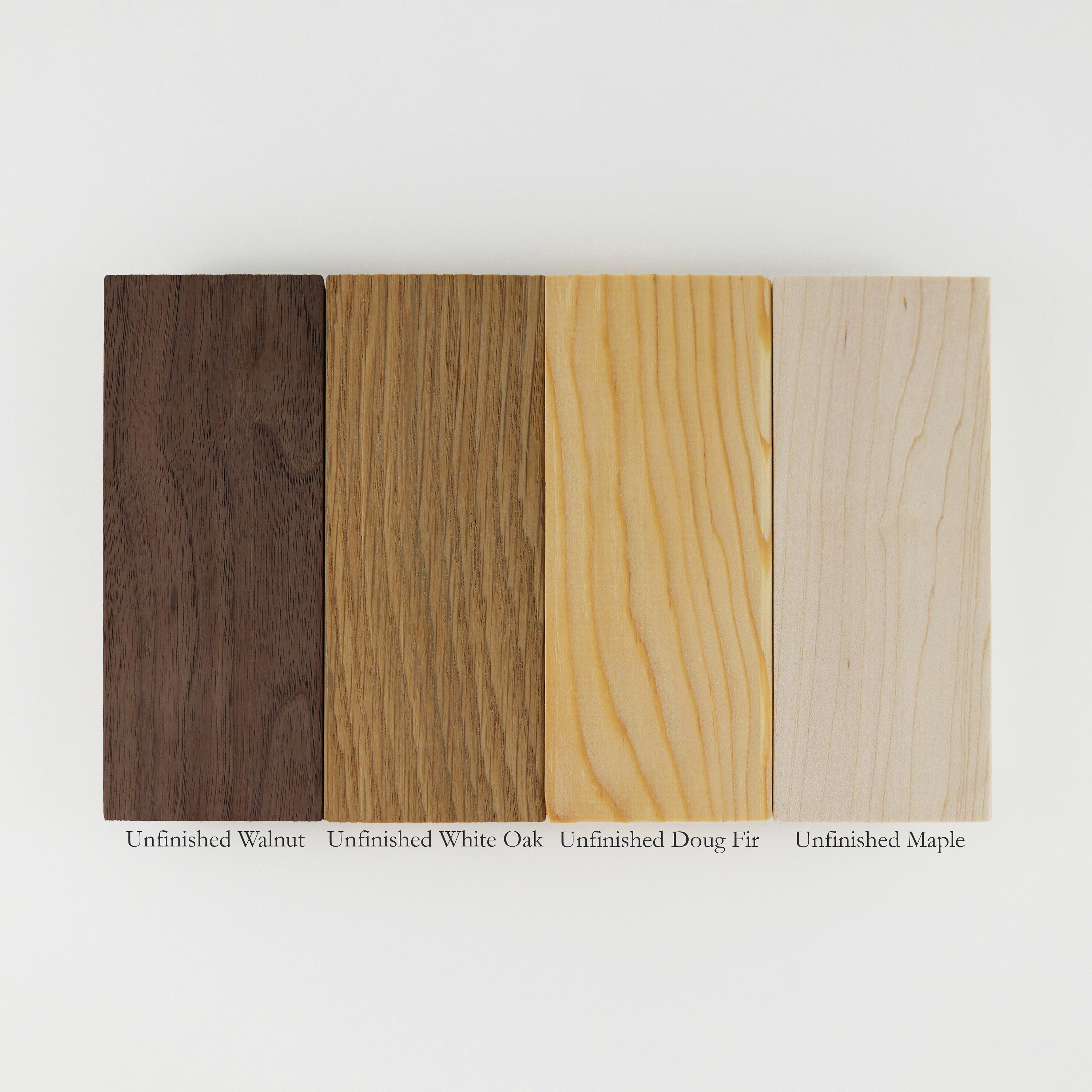- Made in our Los Angeles shop.
- Ships within 5-7 business days.
- Comes with dovetail slots and keys.
- Assembly is easy, and the corners come out great.
- Check out this link for instructions.
- Check out this YouTube video for instructions.
- You'd order the same size frame as your artwork. So if you have a 12x12" canvas, you'd order a 12x12" frame. The frame adds about an inch to the canvas/panel, so that a 12x12" frame has outer dimensions approximately 13x13".
- If you have a 1.5” deep canvas, you’d have to choose a frame with a 1.5” rabbet. If your canvases are 3/4” deep or less, then you need to order frames with a 3/4” rabbet.
- Comes with metal brackets and screws with which to attach your art to the frame.
- For custom sizes, please email us. Prices for custom sizes are not too much higher than those for standard sizes and also ship in the usual 5-7 business days.




We have four kinds of natural wood frames. They are not stained or finished in any way, just lightly sanded.
The Doug Fir is reddish in color, typically grainy, and the warmest, most rustic wood we carry. It's also the most variable in appearance from stick to stick.
The Maple is the lightest and most muted of our woods. It's less grainy than the Doug Fir and also more consistent in appearance from stick to stick. The Maple is a harder wood.
The White Oak is darker than the Maple; the Walnut is darker still. Neither is grainy. Both are quite consistent in appearance from stick to stick.
The Walnut and White Oak look especially good when oiled

We have four kinds of natural wood frames. They are not stained or finished in any way, just lightly sanded.
The Doug Fir is reddish in color, typically grainy, and the warmest, most rustic wood we carry. It's also the most variable in appearance from stick to stick.
The Maple is the lightest and most muted of our woods. It's less grainy than the Doug Fir and also more consistent in appearance from stick to stick. The Maple is a harder wood.
The White Oak is darker than the Maple; the Walnut is darker still. Neither is grainy. Both are quite consistent in appearance from stick to stick.
The Walnut and White Oak look especially good when oiled
 Toggle menu
Toggle menu































